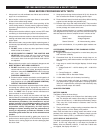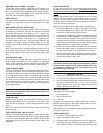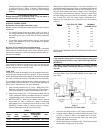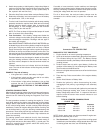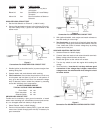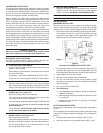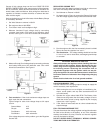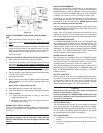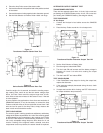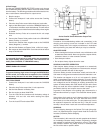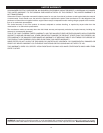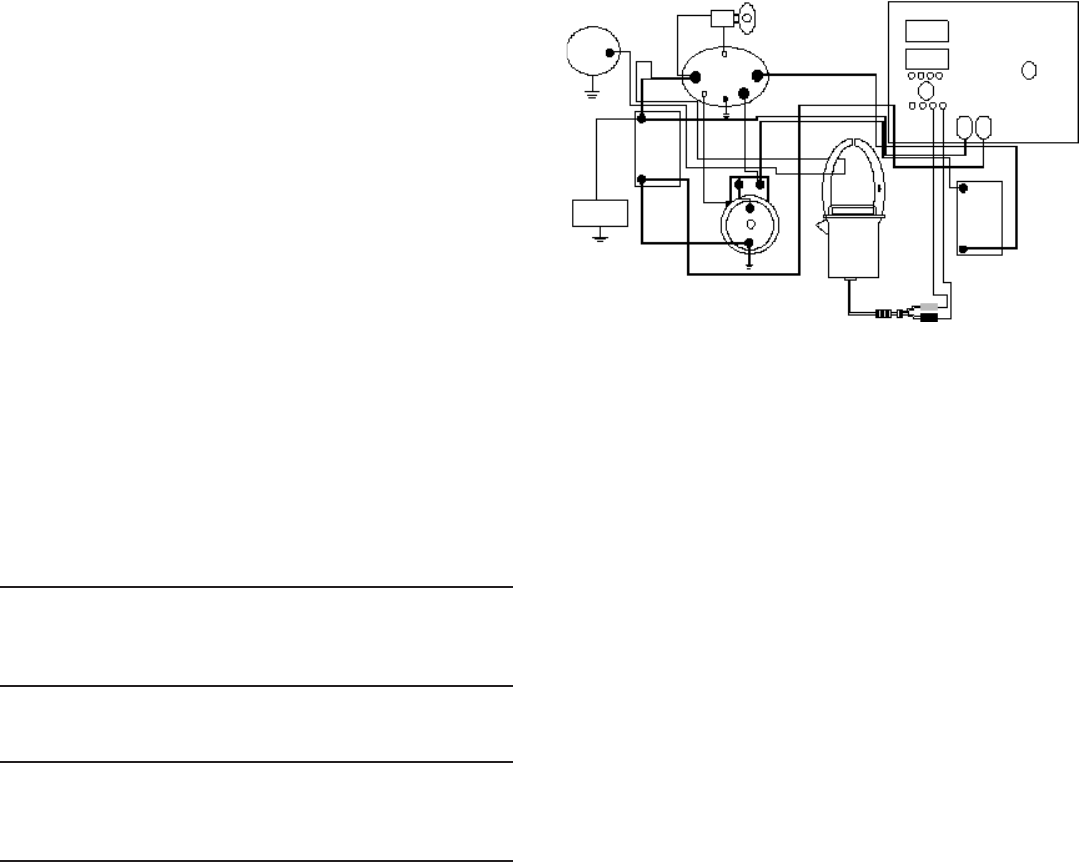
11
24 Volt Output
The 24 volt TRANSFORMER-RECTIFIER output only charges
the CRANKING battery after the starter motor has drawn current
from the battery. The following procedure should be used to simu-
late a recent starter draw and test for output current.
1. Stop the engine.
2. Connect the Analyzer’s Load cables across the Cranking
battery.
3. Place the Amp Probe around either Analyzer Load cable.
4. Apply a 200-300 ampere Load to the CRANKING battery for
15 seconds to simulate a recent start attempt. This will ensure
that a charging current is delivered to the battery when engine
is started.
5. Relocate the Amp Probe to be around the 24 volt output
wire.
6. Connect the External Volts positive lead to the CRANKING
battery Positive (+) terminal.
7. Connect the External Volts negative lead to the CHASSIS
battery Negative (-) terminal.
8. Set the Volts Selector to External Volts, ±199.9 volt range.
9. Run engine at about 2000 RPM. Current should be at least 5
amps at 25-28 volts.
CAUTION
It is essential that Analyzer’s Load cables are connected to
the proper battery during these tests. The instructions will
clearly state CHASSIS, or CRANKING battery.
SERIES PARALLEL CIRCUIT
CAUTION
To prevent drawing high current through the SERIES-PAR-
ALLEL switch, the Load must be applied to the CHASSIS
battery during this test. Do not draw voltage below 12 volt.
TEST PROCEDURE
1. Connect the Analyzer’s Load cable across the CHASSIS
battery.
2. Place the Amp Probe around the 12 volt output wire.
3. Set the Volts Selector to Battery Volts.
4. Run the engine at about 2000 RPM.
5. Turn the Load ON and increase until the battery voltage is
between 12.5 and 13.5 volts while reading the output
amperage.
6. Turn the Load OFF and reduce RPM.
Figure 15
Series Parallel Switch Alternator Output Test
STARTER
CHASSIS
BATTERY
SWITCH
ALT
+
+
-
12V LOADS
CRANKING
BATTERY
+
-
SERIES
PARALLEL
SWITCH
TROUBLESHOOTING
Procedures for troubleshooting cables and connections in the
charging and starting circuits are included in the PST-1000
manual. Always refer to the engine manufacturer’s instructions
before performing any tests with which you may be unfamiliar.
ANALYZER CARE
• When cleaning the Analyzer and leads, use a mild cleaner such
as waterless hand cleaner. Never use gasoline, lacquer thinner,
carburetor cleaner, or other aromatic solvents.
• Store Analyzer indoors
• Do not place heavy objects above the case.
UNUSUAL ANALYZER OPERATION
If the analyzer battery clamps are connected to an excessively
high voltage the display may blank out. Disconnect the analyzer
as soon as possible and shut off the engine.
Check the battery terminal connections visually and also with a
Volt meter to verify good connections before the alternator is run.
This situation can happen on a 12 or 6 volt system if a battery
cable is intermittently loose and the alternator is running. During
the moment that the battery connection opens there may be an
over voltage that can be damaging to anything powered by the
system. A vehicle battery with a bad internal link can do the same
thing, but could also be an explosion hazard if charging gas is
permitted to build up and a spark occurs at the break.
In general, if the analyzer is not reading right, disconnect for a
few seconds and then try it again. This resets the internal protec-
tors.
If the carbon pile is used so much it become red hot, (as viewed
through the case side vents), turn it off. Allow the fan to run for
few minutes to cool the carbon pile. The pile plates may have to
be replaced if exposed to red heat too long. If the pile is used
normally it should never reach such an extreme temperature.
SHIPPING:
To avoid shipping damage to the Carbon Pile Load during ship-
ment, it is important that the Large Control Knob Be Turned Full
Increase (Clockwise) Before Shipping.
NOTICE:
The information in this manual is true and complete to the best of
our knowledge. Because design matters, Engineering changes
and methods of application are beyond our control. The authors
and publisher disclaim any liability incurred in connection with
the use of this data or specific details.




